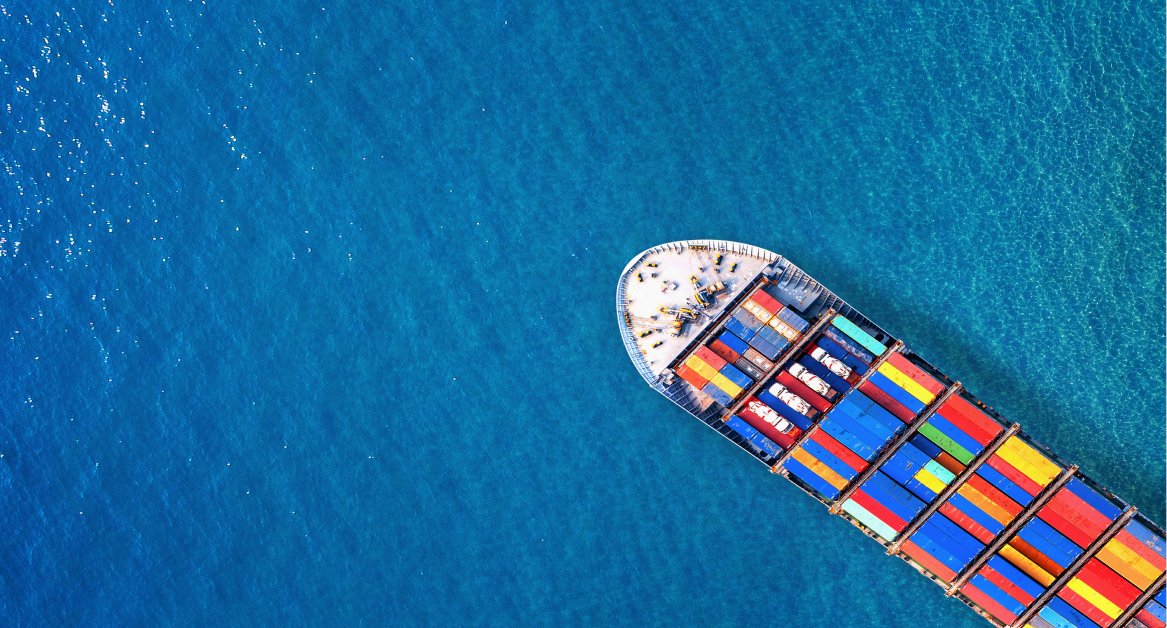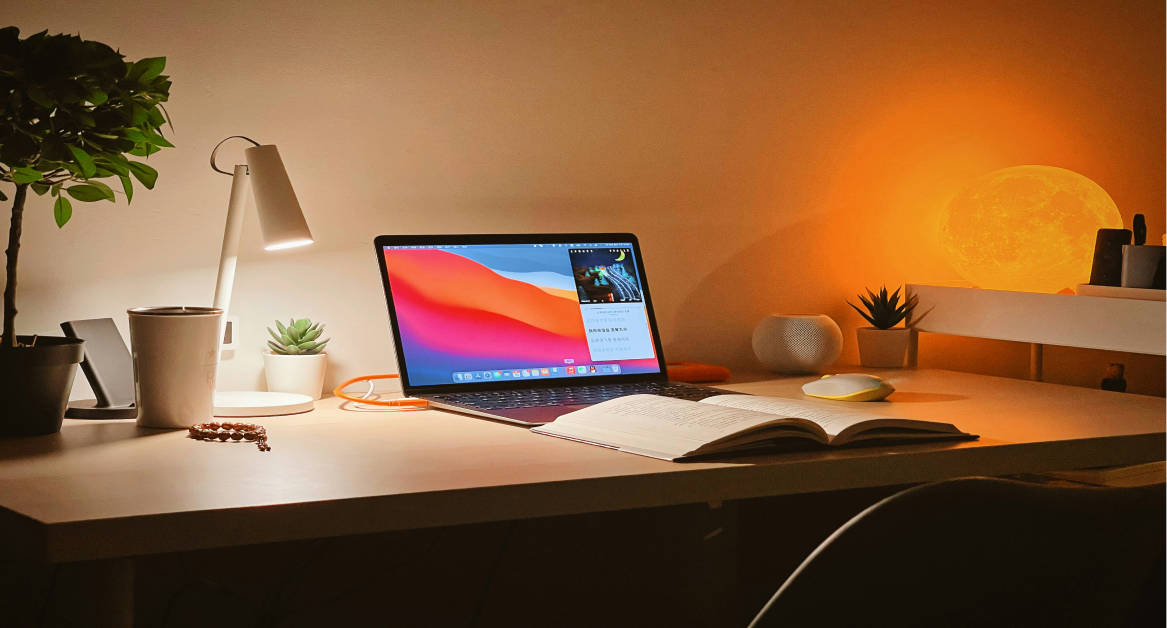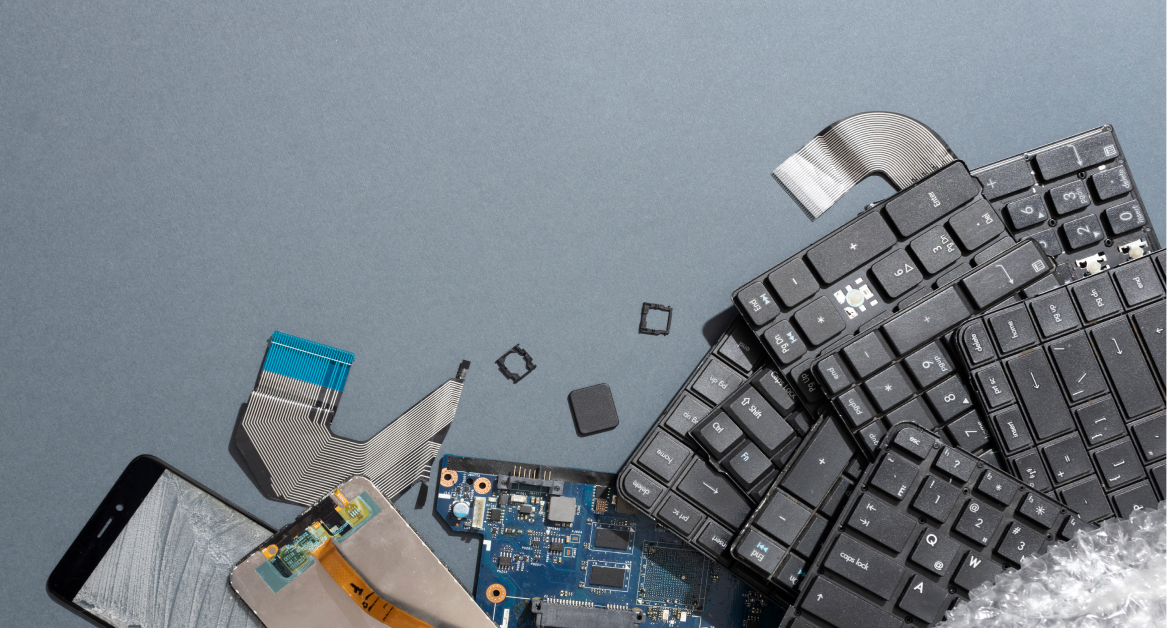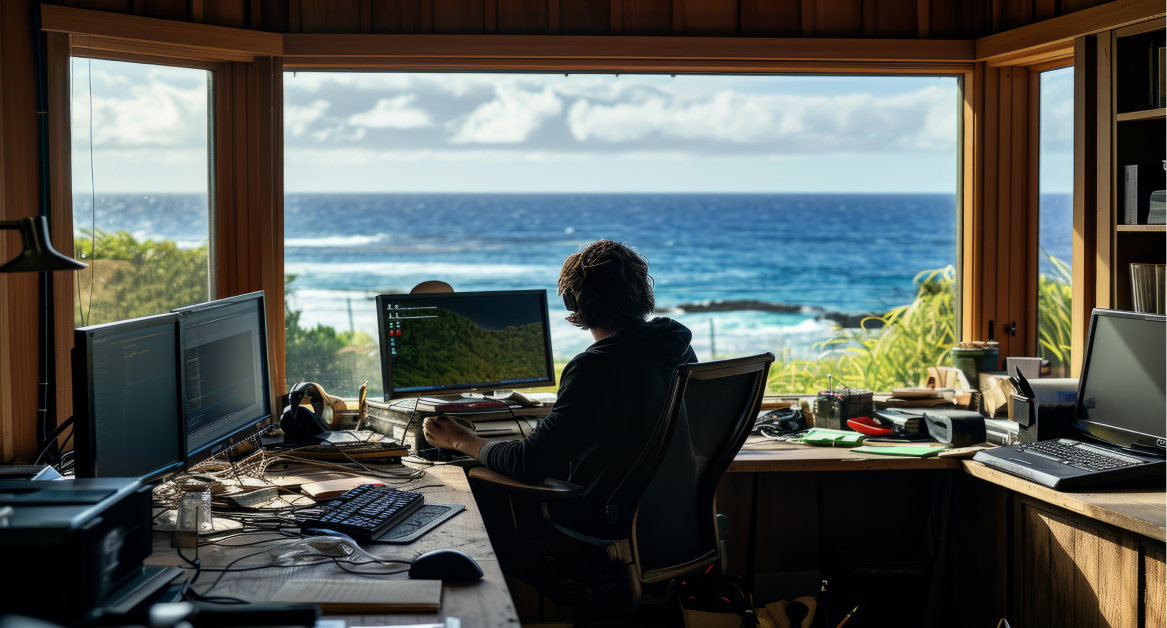Shipping laptops internationally isn’t just about getting them from point A to point B; it’s about ensuring they arrive safely, on time, and in compliance with local regulations.
From navigating customs to shipping options, businesses face several challenges when shipping laptops from the USA to the Philippines. Understanding these complexities—such as import duties, packaging standards, and potential hidden costs—can save you time, money, and unnecessary stress.
Let’s walk you through everything you need to know to ship laptops efficiently and cost-effectively.
Understanding regulations for corporate laptop shipping to the Philippines
Shipping laptops internationally requires compliance with the Philippines’ customs regulations, duties, and shipping safety guidelines. Failing to meet these regulations can lead to unexpected delays, fines, or confiscation of the shipment.
Customs regulations in the Philippines
When shipping laptops to the Philippines, businesses must adhere to the country’s import laws, which are governed by the Bureau of Customs (BOC). Key considerations include:
- Import documentation:
- A commercial invoice detailing the laptop’s specifications, including brand, model, serial number, and declared value.
- A bill of lading or an air waybill serves as proof of shipment and is required for tracking purposes.
- An import declaration form (Single Administrative Document or SAD) must be filed with Philippine Customs.
- Some shipments may require a Certificate of Compliance if the device includes encrypted software or wireless communication capabilities.
- Tariff classification:
- Laptops generally fall under Harmonized System (HS) Code 8471.30, which helps determine applicable import duties and taxes.
- Proper classification is crucial to avoid penalties or incorrect tax assessments.
- Regulatory compliance:
- The National Telecommunications Commission (NTC) requires laptops with wireless communication features to comply with Philippine standards.
- Businesses should ensure compliance with the Data Privacy Act, especially if the laptop contains confidential corporate data.
- Restricted and prohibited items:
- Some items, such as high-powered external batteries or laptops with military-grade encryption, may require special permits or additional clearance.
- Counterfeit or unregistered electronic devices are strictly prohibited and may be confiscated by customs.
Duties and taxes in the Philippines
Importing laptops into the Philippines incurs costs that businesses need to consider to avoid unexpected expenses. Key charges include:
- Customs duties:
- Laptops are generally duty-free, provided the declared value does not exceed the allowed exemption threshold under personal use or corporate imports.
- Businesses should verify whether they qualify for exemptions under tax incentive programs, such as those provided to registered IT companies in the Philippines.
- Value-added tax (VAT):
- A 12% VAT applies to the total cost of the laptop, including the item’s declared value, shipping fees, and insurance costs.
- VAT exemptions may be available for certain industries under the Philippine Economic Zone Authority (PEZA) program.
- Additional fees:
- Shipments valued above PHP 10,000 may be subject to customs processing fees, storage charges, or inspection fees if held for further evaluation.
- Engaging with a licensed customs broker can help businesses navigate these potential extra costs efficiently.
Restricted items
When shipping laptops to the Philippines, businesses must be mindful of regulations related to specific components within the device, such as batteries and software.
- Lithium batteries:
- Classified as dangerous goods due to their fire risk, lithium-ion batteries are subject to stringent regulations set by the International Air Transport Association (IATA).
- To comply with shipping regulations, batteries should:
- Be installed within the device rather than shipped separately.
- Be packed with adequate protection, such as bubble wrap or foam, to prevent movement and potential damage.
- Include proper labeling to indicate hazardous material content.
- Encryption software:
- Laptops equipped with encryption software must comply with Philippine cybersecurity regulations, and businesses may need to obtain clearance from the Department of Information and Communications Technology (DICT).
- Prohibited items:
- Certain laptop accessories, such as high-capacity power banks exceeding regulatory limits, may be classified as prohibited imports.
- Devices containing content that violates intellectual property laws may be confiscated by authorities.
Cost of shipping laptops to the Philippines for businesses
Shipping laptops from the USA to the Philippines involves various costs that businesses need to consider to avoid budget overruns. These costs include courier fees, customs duties, packaging, insurance, and potential hidden expenses. Proper planning and choosing the right shipping solutions can help businesses optimize costs while ensuring timely and safe delivery.
Courier fees
The cost of shipping largely depends on the courier service selected and the speed of delivery required. Businesses have several shipping options to choose from:

1. Express shipping (1-3 business days)
Courier services such as FedEx, UPS, and DHL provide expedited shipping with premium services, including real-time tracking, customs clearance support, and faster transit times.
- Estimated cost: $100 – $250 per laptop (depending on weight and dimensions)
- Advantages:
- Fast delivery (1-3 business days)
- Comprehensive tracking and customs assistance
- Higher insurance coverage options
- Best for: Businesses needing urgent laptop deliveries or shipping high-value devices
2. Standard shipping (5-10 business days)
More cost-effective options such as USPS (United States Postal Service) or third-party freight forwarders offer affordable rates but longer delivery times.
- Estimated cost: $50 – $100 per laptop
- Advantages:
- Lower cost compared to express services
- Reliable delivery for non-urgent shipments
- Best for: Businesses looking to minimize costs with flexible delivery timelines
3. Freight forwarding services
Companies with bulk shipping needs can consider freight forwarding solutions. These providers consolidate shipments to reduce costs, often offering competitive rates and full logistics support.
- Estimated cost: Variable (based on volume and weight)
- Advantages:
- Lower costs for bulk shipments
- Door-to-door services with customs support
- Best for: Large businesses with recurring shipping requirements
Customs duties and taxes in the Philippines
Businesses must factor in customs duties and taxes when shipping laptops to the Philippines. Laptops, classified under HS Code 8471.30, are typically duty-free, but taxes still apply.
Breakdown of costs:
- Value-added tax (VAT):
- The standard VAT rate is 12% of the total cost, which includes the declared value of the laptop, shipping fees, and insurance.
- Example: A laptop valued at $1,000 with $100 shipping cost will incur a VAT of $132 (12% of $1,100).
- Import processing fees:
- Customs may impose processing fees, typically ranging from $30 to $50 per shipment.
- Engaging a customs broker can help streamline clearance and avoid potential delays.
- Tax exemptions:
- Businesses operating under special economic zones such as PEZA (Philippine Economic Zone Authority) may qualify for tax exemptions on imported laptops used for business operations.
Packaging and insurance costs
To ensure laptops arrive safely, investing in proper packaging and insurance is crucial.
Packaging materials
- Bubble wrap or foam padding: Provides shock absorption and prevents damage during transit.
- Sturdy shipping box: Avoids external pressure damage; double-walled boxes are recommended.
- Sealing and labeling: Secure packaging with clear labeling for “fragile” items and compliance with shipping regulations.
- Packaging materials can cost between $10 – $30 per laptop, depending on the size and level of protection required.
Insurance coverage
Most couriers offer insurance to protect against damage or loss during transit. Insurance is typically calculated based on the declared value of the laptop. Estimated cost:
- Insurance rates vary from 1% – 3% of the laptop’s declared value.
- For example, a $1,000 laptop may cost an additional $10 – $30 for full insurance coverage.
Hidden costs to watch for
Businesses should be aware of additional costs that may arise unexpectedly during the shipping process. These hidden fees can impact the total shipping cost and should be accounted for in advance.
Storage fees
- If customs clearance takes longer than expected, storage fees may apply at Philippine ports.
- Charges can range from $5 – $20 per day, depending on the warehouse facility and duration.
Customs brokerage fees
- Hiring a customs broker to assist with paperwork and clearance can cost anywhere from $50 – $150, depending on the complexity of the shipment.
- Brokers can help expedite the process and reduce the risk of costly mistakes.
Compliance costs
- Special requirements for lithium battery packaging or compliance with encryption software regulations may result in additional documentation fees.
- Certain laptops with advanced security features may require additional certifications before being cleared for entry.
Additional handling fees
- Oversized or overweight shipments may incur extra handling fees by courier companies.
- Laptops shipped with extra accessories, such as docking stations or monitors, might require special handling.
Step-by-step corporate shipping process for laptops from the USA to the Philippines
Shipping laptops internationally can be complex, but following a structured process helps businesses ensure compliance, avoid delays, and minimize costs.
Step 1: Choose the right shipping provider
Selecting a reliable courier is key to a successful shipment. Popular options include:
- FedEx, UPS, DHL: Fast, reliable, with customs support and tracking.
- USPS: Cost-effective for non-urgent shipments.
- Freight forwarders: Best for bulk shipping at lower costs.
Tip: Consider speed, cost, and tracking options when choosing a provider.
Step 2: Gather required shipping documents
Accurate documentation prevents customs delays. Required documents include:
- Commercial invoice: Details of the laptop (brand, model, value).
- Packing list: Contents of the shipment.
- Air waybill: Proof of shipment.
- Customs declaration form: Required for tax assessment.
Tip: Ensure all information is accurate to avoid clearance issues.
Step 3: Properly package the laptops
Protecting laptops during transit reduces the risk of damage. Best practices include:
- Bubble wrap or foam: Prevents shocks.
- Sturdy shipping box: Avoids damage.
- Labeling: Mark as “Fragile” and include handling instructions.
Tip: Use high-quality packaging to ensure safe delivery.
Step 4: Select the right shipping service
Choosing the correct service depends on urgency and budget:
- Express (1-3 days): Quick but expensive.
- Standard (5-10 days): Affordable but slower.
- Door-to-door vs. centralized delivery: Choose based on convenience and cost.
Tip: Express is ideal for urgent needs; standard for cost savings.
Step 5: Insure the shipment
Protect your investment with shipping insurance. Options include:
- Courier-provided insurance: Basic coverage for declared value.
- Third-party insurance: Additional coverage for high-value items.
Tip: Insurance costs around 1-3% of the laptop’s value.
Step 6: Track the shipment
Stay informed with real-time tracking:
- Courier tracking tools: Monitor progress online.
- Recipient notifications: Keep the recipient updated.
Tip: Track shipments regularly to address any issues early.
Step 7: Handle customs clearance and delivery
Once in the Philippines, the shipment must clear customs before final delivery. Steps include:
- Pay taxes and fees promptly.
- Work with a customs broker for smooth processing.
- Schedule delivery to the final recipient.
Tip: Keep a copy of all documents for future reference.
Selecting the right shipping method for corporate needs
Express vs. standard shipping

Businesses must decide between express and standard shipping based on delivery urgency and cost considerations.
- Express shipping (1-3 business days):
- Higher cost but faster delivery.
- Ideal for urgent employee onboarding or replacement devices.
- Provides end-to-end tracking and customs clearance support.
- Carriers: FedEx, UPS, DHL.
- Estimated cost: $100-$250 per laptop.
- Standard shipping (5-10 business days):
- More affordable but slower.
- Suitable for planned shipments with flexible timelines.
- Limited tracking compared to express options.
- Carriers: USPS, freight forwarders.
- Estimated cost: $50-$100 per laptop.
Tip: Express shipping is best for time-sensitive needs, while standard shipping offers cost-effective solutions for bulk shipments.
Corporate partnerships with couriers
Building long-term partnerships with couriers can provide businesses with:
- Volume discounts: Lower shipping costs for bulk laptop shipments.
- Priority handling: Faster processing and reduced transit times.
- Dedicated account support: Assistance with customs and logistics.
- Custom billing options: Simplified invoicing for multiple shipments.
Tip: Partnering with a logistics provider like Esevel can help businesses negotiate better shipping rates and service agreements.
Door-to-door vs. centralized delivery
Businesses can choose between direct shipments to employees or a centralized hub for distribution.
- Door-to-door shipping:
- Direct delivery to employees in the Philippines.
- Ensures convenience but can be more expensive.
- Best for remote teams and new hires.
- Centralized delivery:
- Bulk shipment to a company office or distribution center.
- Reduces per-unit shipping costs.
- Allows for local distribution and asset tracking.
Tip: Centralized delivery is ideal for large-scale deployments, while door-to-door offers a personalized solution for remote teams.
Customs brokerage services
Navigating customs regulations can be complex, and hiring a customs broker can:
- Ensure compliance with Philippine import laws.
- Speed up customs clearance.
- Help calculate duties and taxes accurately.
- Handle documentation to avoid penalties or delays.
Tip: Most major couriers offer customs brokerage services as part of their shipping packages, but third-party brokers can provide specialized support.
Simplify laptop shipping with Esevel
Shipping laptops from the USA to the Philippines can be a complex process involving customs regulations, packaging requirements, and cost considerations
By understanding shipping options, packaging best practices, and customs procedures, businesses can avoid unnecessary delays and additional costs. However, managing all these logistics in-house can be time-consuming and resource-intensive, so why not outsource this process to Esevel – your trusted IT service partner?
Esevel simplifies the entire process by offering:
- End-to-end IT equipment management: From procurement to delivery, we handle it all.
- Secure packaging solutions: Ensuring laptops arrive safely with no damage.
- Customs compliance support: Helping you navigate complex regulations with ease.
- Real-time tracking and support: Providing visibility and control over your shipments.
- Corporate shipping solutions: Whether you need bulk delivery to a central location or door-to-door service, we tailor solutions to your business needs.
5 frequently asked questions (FAQs)
1. What is the best courier for shipping laptops to the Philippines?
FedEx, DHL, and UPS offer the most reliable services with tracking and customs support.
Or if you’re shipping laptops for remote employees or business operations, Esevel can handle device procurement, secure shipping, and IT setup across multiple locations, simplifying the process.
2. Are there shipping restrictions on laptop batteries?
Yes, lithium batteries require special packaging and compliance with airline regulations.
3. How long does shipping take?
Express services take 1-3 days, while standard services take 5-10 days.
4. What taxes apply when shipping laptops to the Philippines?
Expect a 12% VAT based on the declared value of the laptop.5. How can Esevel help with corporate laptop shipping?
Esevel handles procurement, packaging, and compliance to simplify the process.
5. How can Esevel help with corporate laptop shipping?
Esevel handles procurement, packaging, and compliance to simplify the process.







